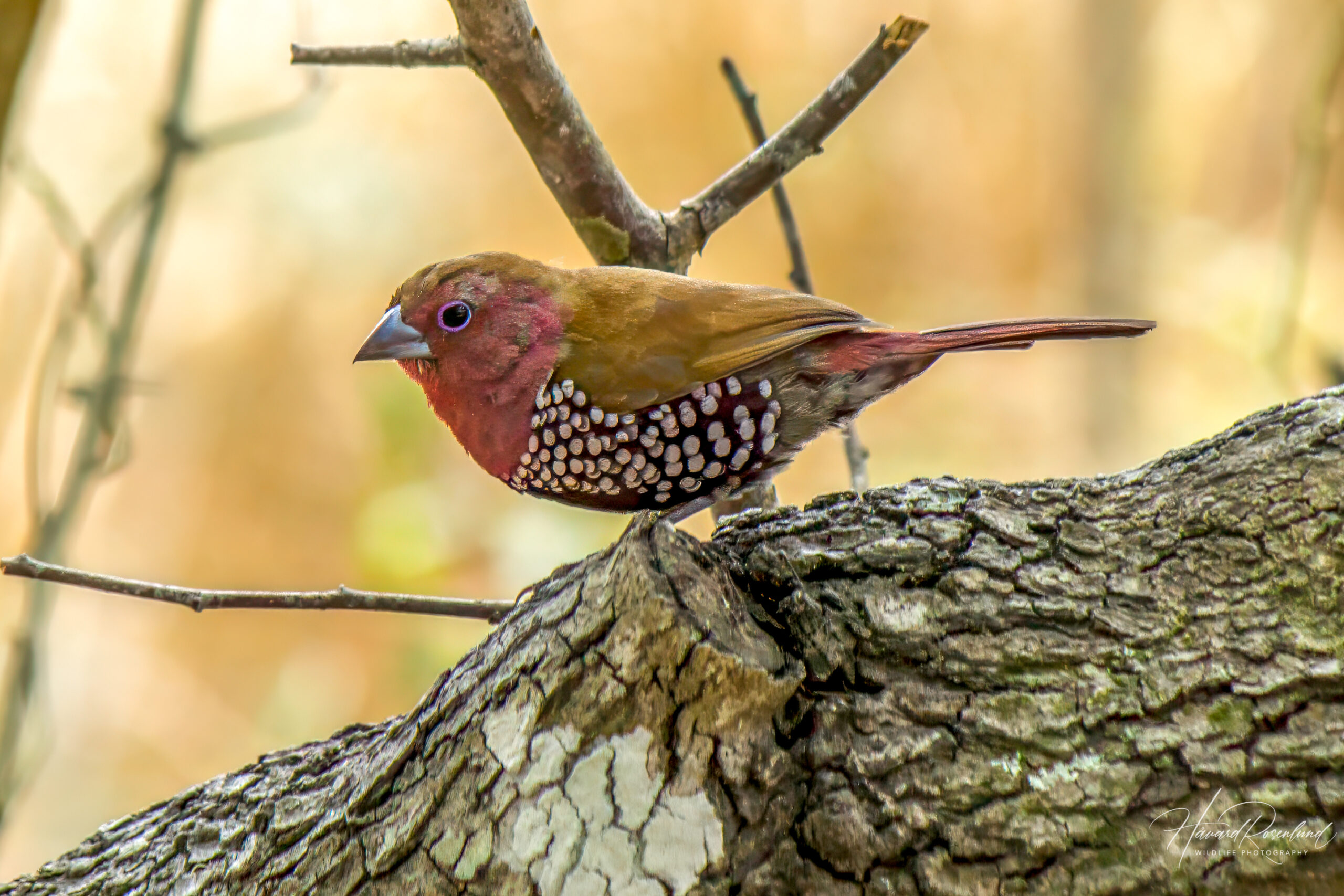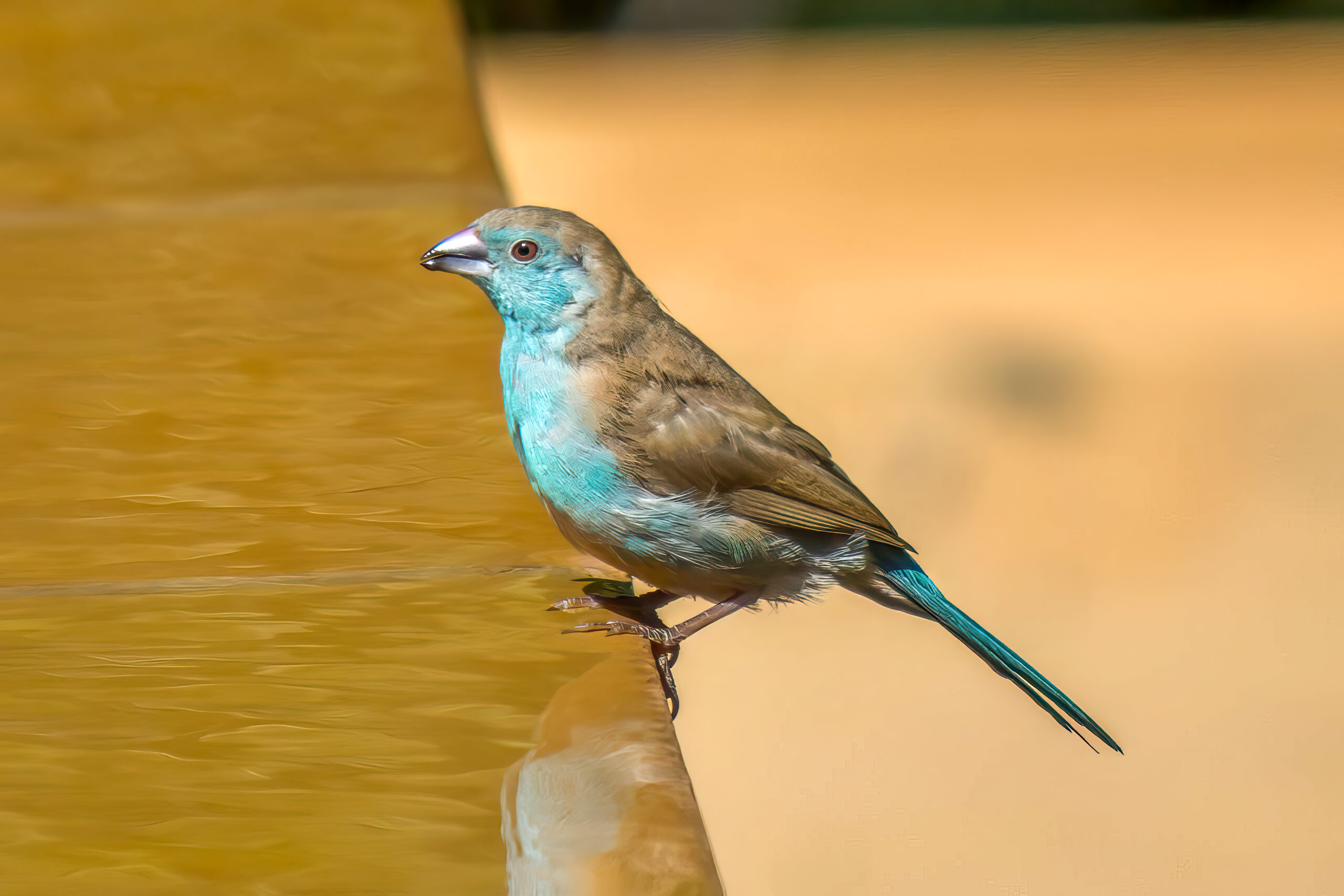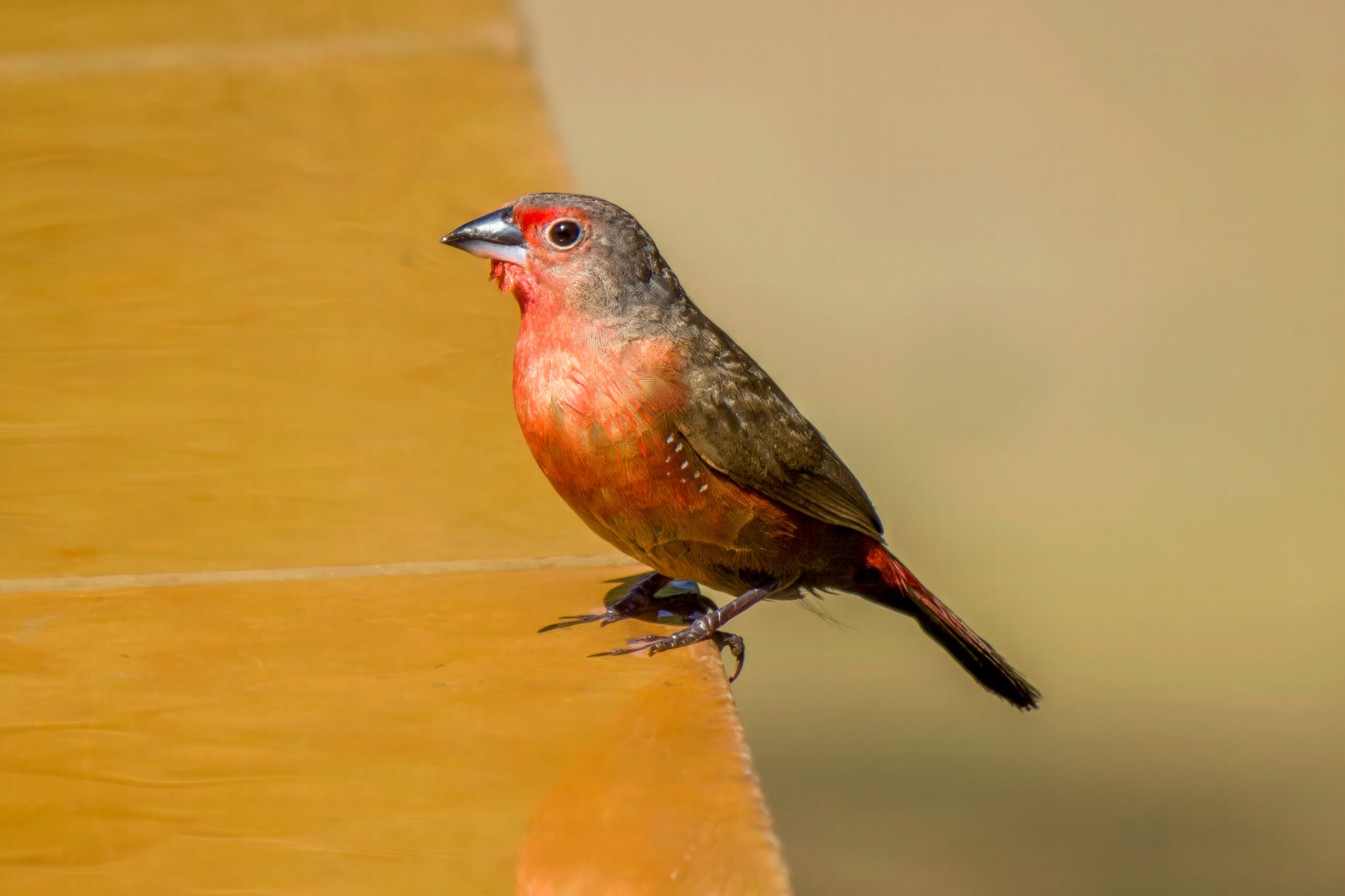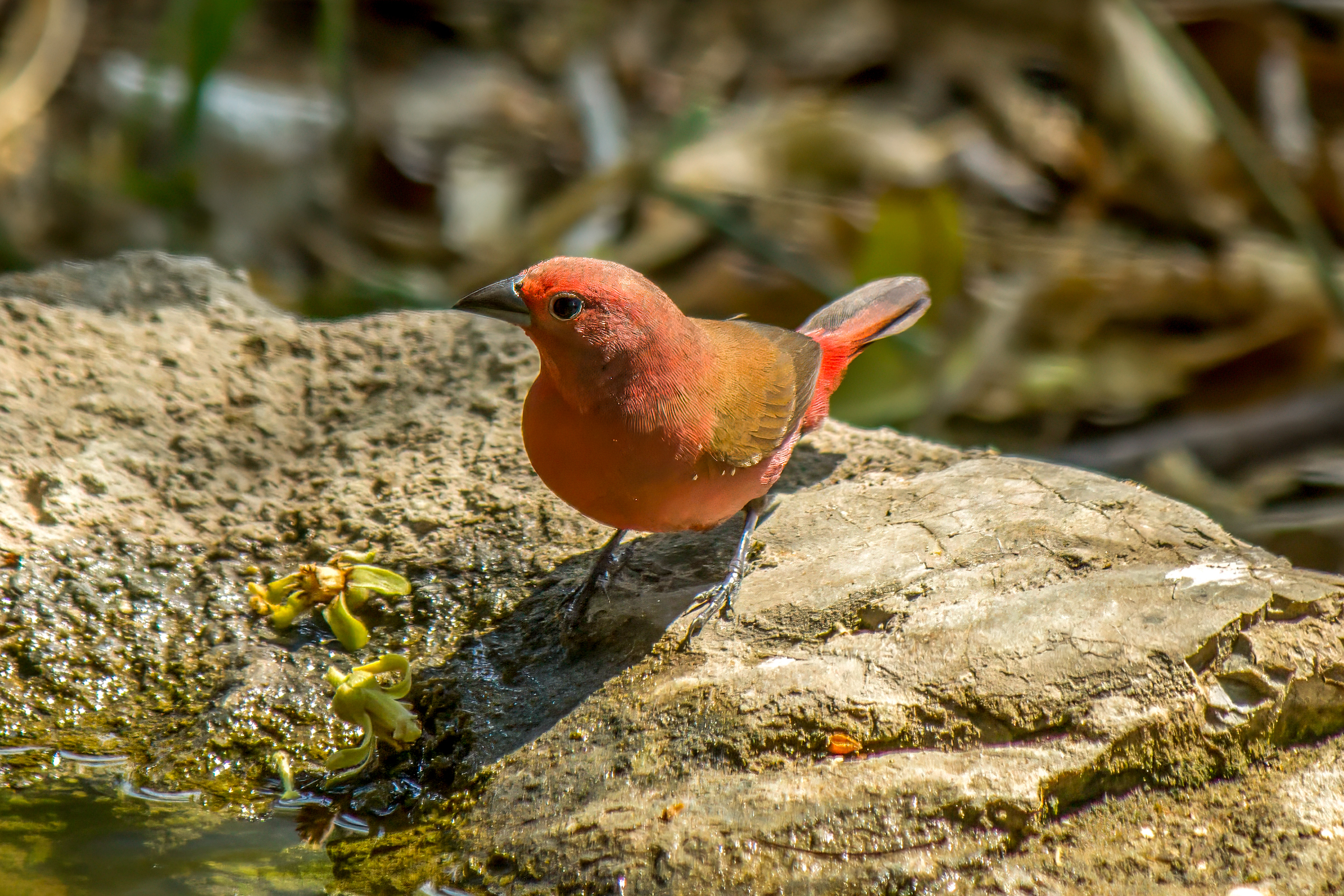Pink-throated Twinspot
(Hypargos margaritatus)
Description
The pink-throated twinspot (Hypargos margaritatus) is a small, colorful bird, easily distinguishable by its vibrant plumage. Its range encompasses only a portion of southeastern Africa, where it is primarily found in southern Mozambique, northeastern South Africa, and Eswatini. Adults typically measure around 10-11 cm (3.9-4.3 in) in length. The species is renowned for the male’s bright pink throat and breast, as well as white spots on black flanks and belly. The female is similar, but its throat is grey in color. The pink-throated twinpsot is very similar to the red-throated twinspot (Hypargos niveoguttatus), found further north, which is bright red and not pink on its throat and breast.
Diet & habitat
This species inhabits subtropical or tropical dry forests, preferring areas with dense undergrowth. They are also found in coastal bush and thickets. As omnivores, their diet consists of seeds, insects, and other small invertebrates. They often feed on the ground, foraging through leaf litter and undergrowth with a methodical approach. Pink-throated twinspots form small flocks, especially outside the breeding season, and are known for their social behavior.
Nesting
The breeding season of the pink-throated twinspot generally coincides with the wet season. They are known for their unique nesting behaviors, constructing oval-shaped nests with a side entrance, often in dense vegetation or low shrubs. The female typically lays 3-4 eggs, which are then incubated for about 12-14 days. After hatching, the fledgling period lasts approximately two weeks, during which both parents are actively involved in feeding and protecting the young.
Status
The pink-throated twinspot has a stable population, and it is not threatened. However, like many species, it could face threats from habitat loss and degradation due to human activities. Conservation efforts are essential to maintain stable population numbers and protect their natural habitats. It is listed as least concern on the IUCN Red List.







